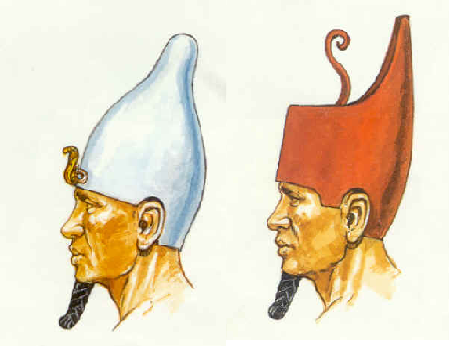A particular fascination of mine, no matter what time period or locale, is symbology. It is an ever-present force in our modern, consumer oriented culture, but the symbols co-opted to plaster across products and advertisements are rooted deep in the annals of history. One of the most widely recognized symbols across world history is the crown. It is understood as a symbol of power and authority, but why is a fancy hat associated with those characteristics?
The earliest crowns can be traced back to ancient Egypt, a culture that developed long before most others. Egypt grew around and depended on the Nile, the country’s only source of life. The Nile runs north to south, (though it flows south to north,) and as such, the ancient society itself developed largely in terms of the Nile’s north/south orientation.
Pre-dynastic Egypt was a tribal society, where different powerful men ruled in their own specific sphere. Discoveries dating to the 5th millennium B.C. evidence that early Egypt had a more inviting climate, allowing many early Egyptians to raise cattle and farm. Over the next two millenia, however, the temperate climate dried out, forcing the farmers towards the Nile, and allowing the local rulers to expand their influence and build larger cities. With a larger citizen base compacted along the Nile, the best rulers rose to the top, and asserted their strength, effectively turning Egypt into a North/South rivalry.
The symbols of these early rulers, “kings,” are the first examples we have of crowns. The crown of Upper Egypt (the southern kingdom) was a tall, white headdress, which bore a striking resemblance to a bowling pin. The white crown was the symbol of the Upper Kingdom’s goddess, Hedjet. Lower Egypt (the northern kingdom) had a red crown as its ruler’s symbol. This crown comes to a point, and was also portrayed as the symbol of the the Lower Kingdom’s cobra goddess, Wadjet.
These two crowns were seen as symbols of power by the ancient Egyptians. They demonstrated power in a physical/visual aspect because they made the wearer of the crown taller than his subjects. Though modern crowns do not necessarily retain the same accentuated height as the earliest Egyptian examples, their symbolism as objects of power can be traced to their early counterparts. The crown of ancient Egypt was the original royal symbol.
In further posts, I will seek to examine more symbolism throughout ancient history, including the evolution of the Egyptian crown and it’s adapting symbolism. Thanks for reading!
